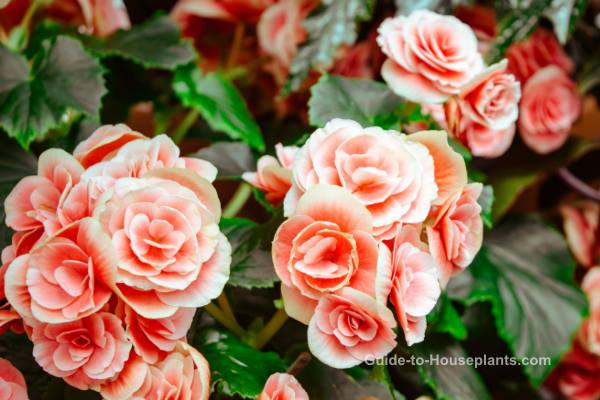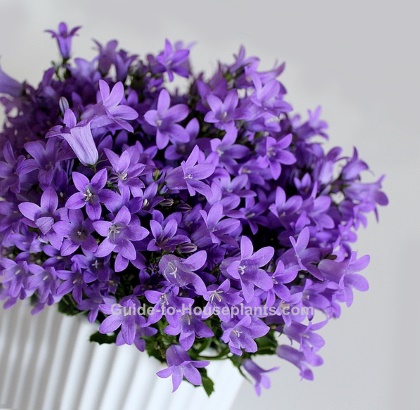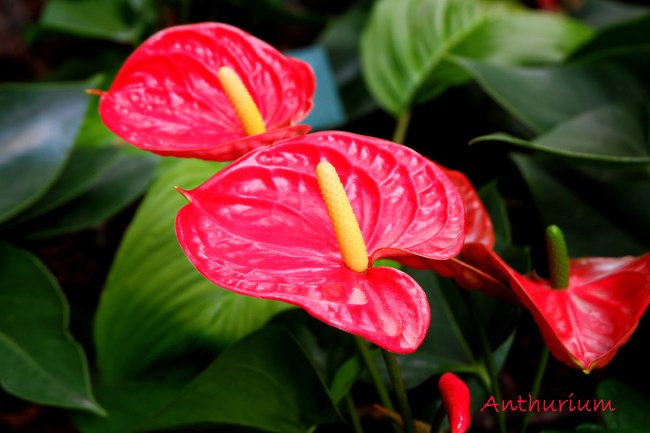Poisonous House Plants
How to Know if a House Plant is Poisonous
...or Just Plain Irritating
Poisonous house plants should be handled with caution. Some can cause illness if eaten, and others can cause skin irritation.
Children are unlikely to eat house plants, but some brightly colored fruit may seem tempting. Call your physician immediately if your child has eaten any plant and shows signs of illness.
Cats, especially, and some dogs may play with or chew on plants. The toxic sap in poisonous house plants tastes extremely bitter and can cause a burning sensation in the mouth, so a pet is unlikely to play with them long. If your pet has eaten any of these plants and shows signs of illness such as vomiting, drooling, tremors, or any other abnormal behavior, contact your veterinarian immediately.
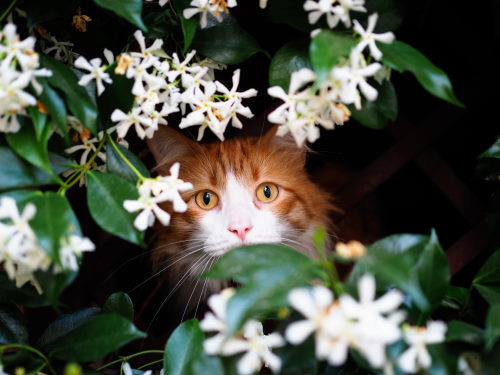 Jasmine plant (above) is NOT poisonous. Photo: Amelie & Niklas Ohlrogge.
Jasmine plant (above) is NOT poisonous. Photo: Amelie & Niklas Ohlrogge.It's a good idea to keep your hands away from your eyes and mouth while pruning or repotting these poisonous house plants, and to wash your hands thoroughly afterward. If your skin is sensitive, I recommend wearing gloves while handling them.
List of Poisonous House Plants
Here's a round-up of the usual suspects:
Aloe Vera contains saponins and anthraquinones that when eaten may cause vomiting, lethargy and diarrhea.
Angel Trumpet Plant (Datura candida): All parts are extremely poisonous; contains alkaloids atropine, scopolamine and hyoscyamine. Eating any part of this plant can cause hallucinations, paralysis and can be fatal.
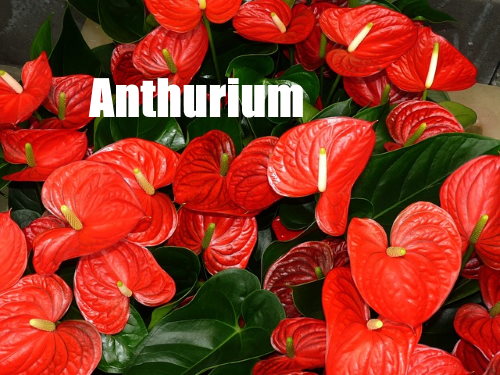
Anthurium Plant (Anthurium species): Leaves contain calcium oxalate crystals that cause severe burning in mouth and skin irritation.
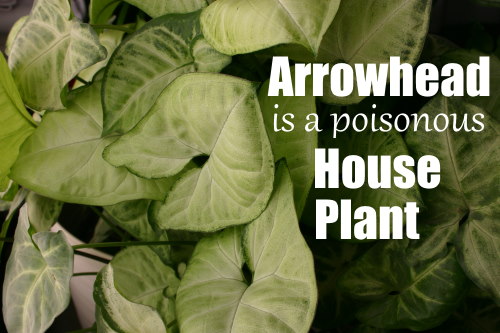
Arrowhead Plant (Syngonium podophyllum): Sap is toxic, containing insoluble oxalate crystals. Chewing or eating this plant causes a burning sensation in the mouth, and may also cause extreme salivating, vomiting and loss of appetite. Handling this plant may cause skin irritation.
Asparagus Fern (Asparagus densiflorus 'Sprengeri'): Poisonous berries may cause abdominal pain and upset stomach. It may also cause skin irritation.
Caladium (Caladium hortulanum) Contains insoluble calcium oxalates, which causes painful swelling of the mouth when eaten. In cats and dogs, it may cause drooling, vomiting and difficulty swallowing.
Calla Lily (Zantedeschia rehmannii) spp.): All parts are poisonous, especially rhizomes. Ingesting this plant causes burning in the mouth, salivating and difficulty swallowing.
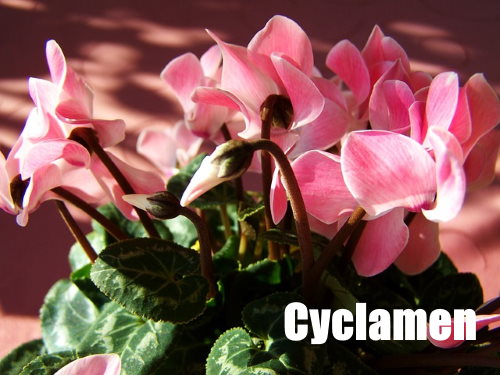
Cyclamen (Cyclamen spp.): Tuberous rhizomes (roots) contain the toxin cyclamine. Ingesting rhizomes may cause vomiting, irregular heart beat, seizures and death.
Chrysanthemum (Chrysanthemum morifolium): Leaves are poisonous if eaten and cause skin irritation.
Croton (Codiaeum variegatum): Sap is toxic if eaten and may cause salivating and upset stomach. Exposure to sap may cause skin irritation; it's a good idea to wear gloves when pruning and repotting croton plant.
Crown of Thorns (Euphorbia milii): Sap causes irritation in mouth, skin and eyes. Its stems are covered with sharp thorns that may cause injury to people and pets.
Daffodils (Narcissus spp.): All parts of this plant are poisonous, especially the bulbs, which contain lycorine and other alkaloids. If ingested, causes vomiting, salivating, diarrhea, and possibly convulsions, drop in blood pressure, tremors and irregular heart beat.
Dumb Cane (Dieffenbachia): Sap contains insoluble calcium oxalates, causing painful swelling of mouth and throat, as well as vocal loss if eaten.
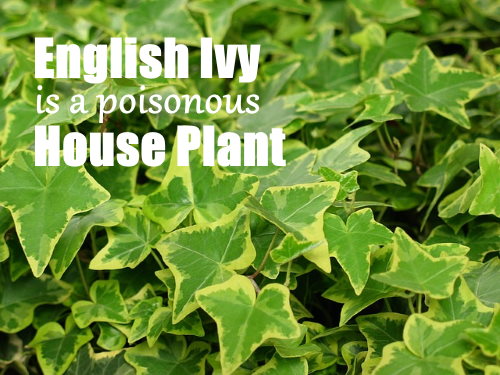
English Ivy (Hedera helix): Leaves are poisonous if eaten, and may cause vomiting, abdominal pain, extreme salivating, diarrhea. Sap can cause skin rash; it's a good idea to wear gloves while handling it.
Glory Lily (Gloriosa superba): All parts are extremely poisonous. Eating this plant can cause vomiting, diarrhea, lethargy, seizures and death.
Jerusalem Cherry (Solanum pseudocapsicum): All parts of this poisonous house plant are dangerous, especially the fruit. Ingesting this plant may cause stomach upset, seizures and depression.

Lily of the Valley (Convallaria majalis): All parts are extremely poisonous. Ingestion may lead to vomiting, irregular heart beat, low blood pressure, disorientation, coma or seizures.
Peace Lily aka Spatheflower (Spathiphyllum): Contains insoluble calcium oxalates, which causes severe burning in mouth, drooling, vomiting and skin irritation.
Philodendron (Philodendron spp.): Contains insoluble calcium oxalates, which can cause severe burning in mouth, drooling, difficulty swallowing and skin irritation.
Poison Primrose (Primula obconica): All parts can irritate sensitive skin
Pothos aka Devil's Ivy (Epipremnum aureum): Non-lethal, but causes burning sensation in mouth.
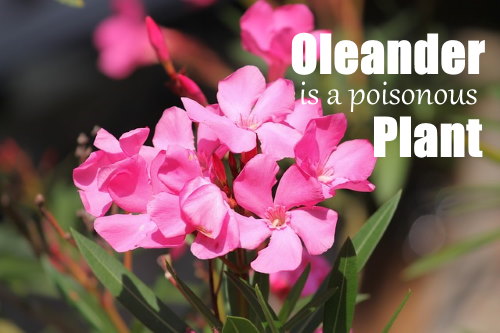
Oleander Plant (Nerium oleander): All parts are extremely poisonous to people and pets. Eating any part of Oleander may cause salivating, abdominal pain, diarrhea, and death.
Sago Palm (Cycas revoluta): All parts of this poisonous house plant is dangerous; the seeds contain the highest amount of toxin and may cause organ failure and death.
Schefflera (Schefflera species): contains calcium oxalate crystals that cause burning in mouth, and may cause kidney failure in both people and pets.
Swiss Cheese Plant (Monstera deliciosa): leaves cause severe burning in mouth if eaten and is toxic to humans, cats and dogs.
ZZ Plant (Zamioculcas Zamiifolia): all parts are poisonous
Another plant you're probably wondering about...
Poinsettia (Euphorbia pulcherrima) is not toxic, but I wouldn't recommend eating it either (it can irritate your stomach). Poinsettia got a bad reputation because it belongs to the Euphorbia family known for its poisonous plants. So this holiday favorite has been unfairly blamed for the bad habits of its family members.
For a complete list of plants toxic to pets, take a look at ASPCA.
Want a list of house plants safe for cats? You'll find them here.
